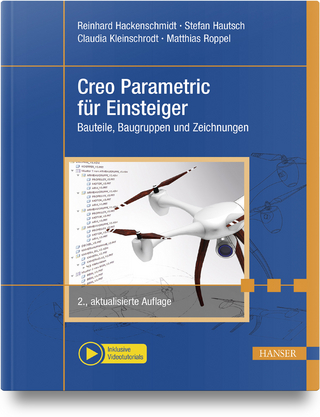
Analysis and Optimum Design of Metal Structures
A A Balkema Publishers (Verlag)
9789054106692 (ISBN)
Detailing a number of structural analysis problems such as residual welding stresses and distortions and behaviour of thin-walled rods loaded in bending, this text also explores mathematical function minimization methods, expert systems and optimum design of welded box beams.
Dr Jozsef Farkas is a professor of Metal Structures. He graduated in 1950 at the Faculty of Civil Engineering of the Technical University of Budapest. He teaches at the University of Miskolc since 1950, as a university professor since 1975. His academic scientific degrees: Candidate of technical science 1966, doctor of technical science 1978. His research field is the optimum design of metal structures, residual welding stresses and distortions, tubular structures, stiffened plates, vibration damping of sandwich structures. He has worked out expert opinions for many industrial problems, especially in the case of storage tanks, silos, cranes, welded press frames and other machine structures. He is the author of a university textbook about metal structures, an English book 'Optimum design of metal structures' (Ellis Horwood, Chichester 1984) and about 140 scientific articles in journals and conference proceedings. He is a Hungarian delegate of the International Institute of Welding (IIW), member of the International Society for Structural and Multidisciplinary Optimization (ISSMO) and a presidential member of the Welding Division of the Hungarian Scientific Society of Mechanical Engineers. Dr Karoly Jarmai is a professor in the Faculty of Mechanical Engineering at the University of Miskolc, Hungary. He graduated as a certified mechanical engineer and received his doctorate (dr. univ.) in 1979 at the University of Miskolc. He teaches design of steel structures, welded structures, composite structures and optimization in Hungarian and in English language for foreign students. His research interest includes structural optimization, mathematical programming techniques and expert systems. He made his C.Sc. (Ph.D.) dissertation at the Hungarian Academy of Science in 1988. He became European Engineer (Eur. Ing., FEANI, Paris) in 1990. He has got the habilitation (dr habil.) at the University of Miskolc, in 1995. He has defended his D.Sc. thesis at the Hungarian Academy of Science with the economic design of different steel structures, optimization and expert systems in 1995. He has published over 120 technical papers, student aids, textbook chapters and conference papers. He is member of ISSMO and the Hungarian delegate in IIW. He is the Deputy Secretary General of the Scientific Society of Mechanical Engineers (GTE) in Hungary and president of this society at the University of Miskolc.
ABOUT THE AUTHORS -- LIST OF SYMBOLS -- INTRODUCTION -- Part 1: Analysis -- 1 RESIDUAL WELDING STRESSES AND DISTORTIONS -- 1.1 Simple examples of thermoelasticity -- 1.2 The Okerblom's analysis -- 1.3 Multi-pass welding -- 1.4 Effect of initial strains -- 1.5 The effect of external loading on the welding residual stresses -- 1.6 Reduction of residual stresses -- 1.7 Numerical examples -- 1.7.1 Suitable welding sequence in the case of a welded asymmetric I-beam -- 1.7.2 Welding in a clamping device -- 1.7.3 Welding in prebent state in a clamping device -- 1.8 Weld improvement methods -- 1.8.1 Weld geometry modification methods -- 1.8.2 Residual stress methods -- 2 THIN-WALLED RODS -- 2.1 Introduction -- 2.2 Bending and shear, shear center -- 2.3 Torsion -- 2.3.1 Saint Venant torsion -- 2.3.2 Warping torsion -- 3 STABILITY -- 3.1 Introduction -- 3.2 Classes of cross-sections -- 3.3 Compression members -- 3.3.1 Flexural buckling -- 3.3.2 Flexural-torsional buckling -- 3.4 Lateral-torsional buckling of beams loaded in bending -- 3.5 Beam-columns -- 3.6 Plate buckling -- 3.6.1 Classic results for plate buckling -- 3.6.2 Post-buckling behaviour of compressed plates -- 3.6.3 Limiting plate slendernesses -- 4 VIBRATION AND DAMPING, SANDWICH STRUCTURES -- 4.1 Measures of damping -- 4.2 Relations between the measures of damping -- 4.3 Classification of damping -- 4.4 Material damping -- 4.4.1 Characterization of viscoelastic materials -- 4.5 Material property measurements -- 4.6 Material damping in structures -- 4.7 Nonmaterial damping -- 4.8 Damping of welded structures -- 4.9 Sandwich structures -- 4.9.1 Vibrations of three-layered damped beam structures -- 4.9.2 Static behaviour -- 4.9.3 Dynamic behaviour -- 4.9.4 Measurements on an experimental sandwich beam -- 5 FABRICATION COSTS -- 5.1 Introduction -- 5.2 Fabrication times for welding -- 5.2.1 Formula proposed by Pahl & Beelich -- 5.2.2 The method based on COSTCOMP data -- 5.3 Surface preparation time -- 5.4 Painting ti
| Erscheint lt. Verlag | 1.1.1997 |
|---|---|
| Verlagsort | Rotterdam |
| Sprache | englisch |
| Maße | 178 x 254 mm |
| Gewicht | 771 g |
| Themenwelt | Informatik ► Weitere Themen ► CAD-Programme |
| Technik ► Bauwesen | |
| Technik ► Maschinenbau | |
| ISBN-13 | 9789054106692 / 9789054106692 |
| Zustand | Neuware |
| Informationen gemäß Produktsicherheitsverordnung (GPSR) | |
| Haben Sie eine Frage zum Produkt? |
aus dem Bereich


